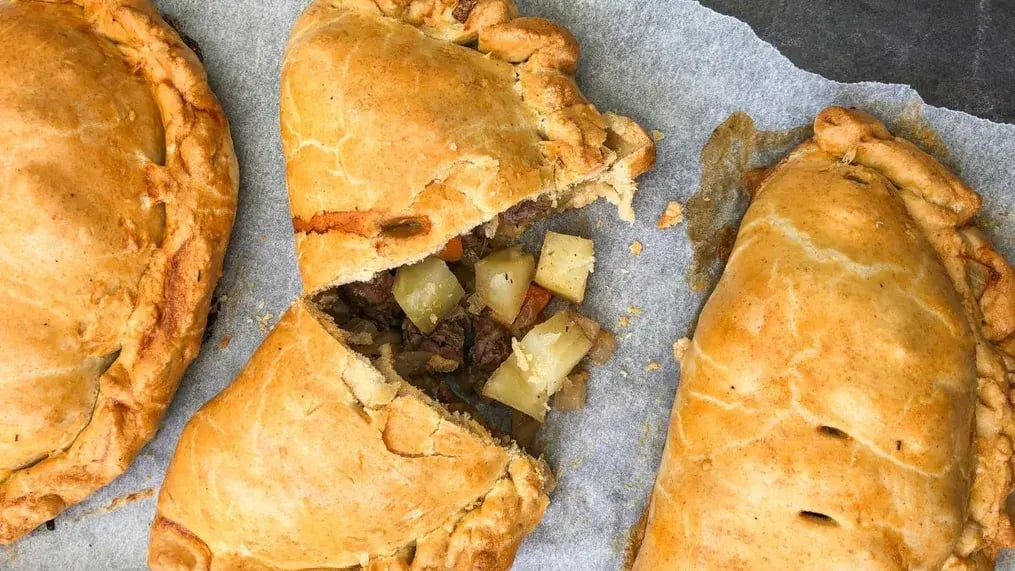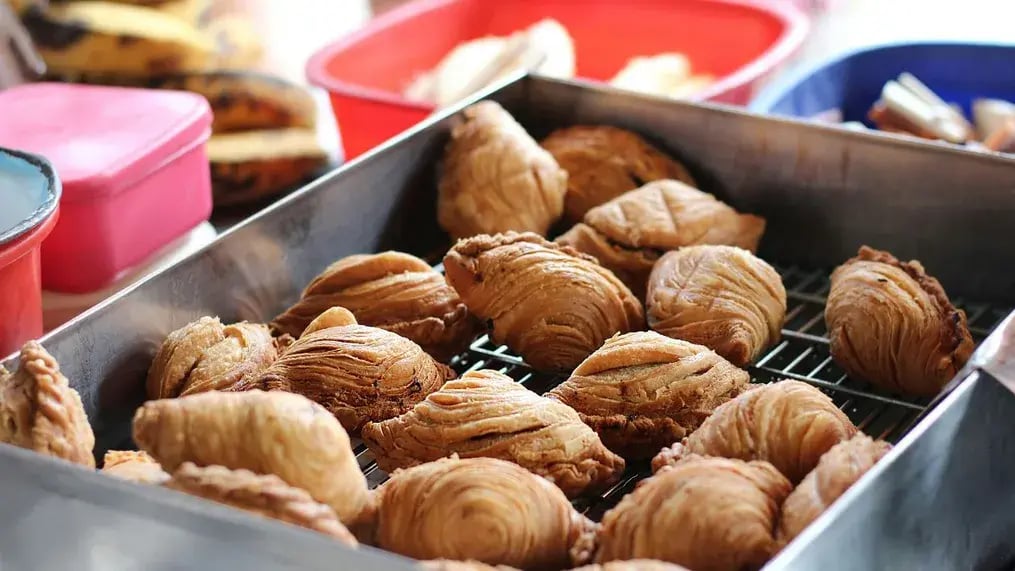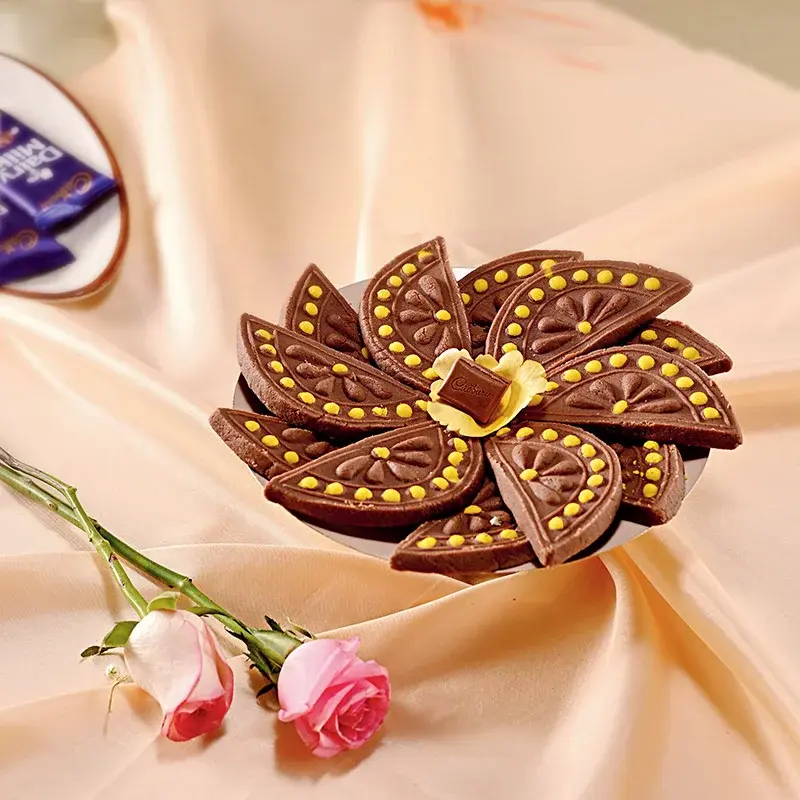Master the art of flaky puff pastry following these simple tips and tricks. Achieve golden, buttery layers that are baked perfectly.

When you peel off warm, flaky portions of freshly baked puff pastry to reveal the inside filling, the joy is unmatched. Many bakers say that puff pastry is actually a culinary miracle where crisp, flaky layers just melt in the mouth. While it is completely possible to make puff pastry at home, it isn’t really that simple. Like any work of art, it needs skill and love in equal measure. Apart from these two things, making puff pastry at home needs attention to detail, and quite a bit of patience.
A good puff pastry should ideally have light, flaky layers that look and taste great. It just adds an extra layer player of finesse to your baking. The best part is that you can use the technique to make puff pastries and use them in both savoury pies or sweet desserts. Whether you make your own dough or use store-bought pastry, these tips and tactics will help you produce consistently flaky results. So, happy baking.
Use Cold Ingredients
The traditional way to make puff pastry is by layering butter and dough, and temperature is a key element to keep track of. It becomes an important factor to keeping these layers intact. Food example, the butter should be cold but also flexible enough to roll out. If it’s too soft, it will blend into the dough; too hard, and will break up. The water used to make the dough also needs to be at the right temperature. When making the dough, make sure the water added is ice cold, to keep the butter from melting too quickly. Also remember to chill the dough in the refrigerator, after rolling and folding it, to keep the layers together.
Roll Gently And Evenly

This is the tricky bit, so make sure you pay attention. How many layers your puff pastry has depends on the rolling procedure, so manage it carefully. It’s important to remember, not to overwork the dough. Over-rolling the dough usually ends up weakening the layers and causes the butter to melt. Always roll the dough in one direction to ensure equal layers. It is also key to maintain consistent dough thickness to promote equal baking. The recommended thickness for most puff pastry recipes is ¼ inch.
Master The Folding Technique
The flakiness in a puff pastry comes from folding the dough many times to form layers. Most bakers know about the good ol’ book or letter fold. These traditional folding techniques become important for forming the distinctive layers. Fold the dough like a book (quarters) or a letter (thirds). Allow the dough to sit in the refrigerator for 20-30 minutes between folds to keep the butter from melting and to relax the gluten. Most recipes require 4-6 folds and rolls. Follow the directions for the exact number of folds required so that your puff pastry dish turns out exactly the way you want it to.
Keep Your Workspace Cool

Working with puff pastry requires the temperatures to be cool. Avoid working near heat sources which means stay away from ovens, stoves, and direct sunshine, all of which could warm the butter in the dough. It is also good if you can refrigerate your rolling pin and board before using them. Also, ifthe dough becomes sticky or warm, place it in the fridge to firm up before you continue.
Use Quality Ingredients
This is an important tip for all kinds of recipes. The quality of your ingredients has a direct impact on the taste and texture of your puff pastry. For the best results, use unsalted, high-fat butter to make your puff pastries. European-style butter is ideal for puff pastry. Also, good all-purpose or pastry flour helps balance structure and softness. Avoid using self-raising flour, as it can interrupt the lamination process.
Cut And Shape Carefully
Make sure your cutting and shaping skills are up to the mark. This helps ensure that your pastry bakes evenly and rises correctly. Always use a sharp knife for this. A dull blade might compress the layers and keep the dough from rising. To make neat cuts you can also use a pizza cutter. Avoid sealing edges and do not press too hard on them, as this can seal the layers and prevent puffing. After cutting or shaping your crust, chill it for 10-15 minutes before baking to ensure it retains its shape.
Bake At The Correct Temperature.

Puff pastry requires high heat to produce steam, which is necessary for its rise and flakiness. Preheat the oven to 190°C -2 20°C before you start baking. Avoid opening the oven door during the first 15-20 minutes of baking to ensure that there is constant heat. If your oven's heat distribution is uneven, rotate the baking tray halfway through.
Use The Appropriate Baking Surface
Did you know that the surface on which you bake determines how well your pastry bakes and rises? Use a baking sheet and line it with parchment paper to avoid sticking and also for even browning. For delicate recipes, chill the baking sheet before placing the crust on it to keep the butter from melting too rapidly. Avoid overcrowding by leaving enough space between pieces so that there is appropriate air circulation and even rising.
Brush And Finish
Even the finishing touches are important while baking a puff pastry. They can improve the appearance and flavour of your puff pastry. For a golden, glossy finish, brush the pastry with a mixture of beaten egg and water or milk. Avoid brushing the margins because it can seal the layers. For sweet dishes in particular, add sugar over the top before baking. To savoury recipes, add sesame seeds or herbs.
Store And Serve Properly
Puff pastry is the tastiest when served fresh. Eat it warm as it is at its flakiest and crispest soon after baking. Baked pastries can be stored at room temperature in an airtight container for up to two days. Reheat them in the oven to regain crispiness. Unbaked puff pastry, including shaped bits, can be frozen for up to a month. Thaw in the fridge before you want to bake them.
More Like This
Popular Articles



Trending Web Stories
Curated Recipes


















